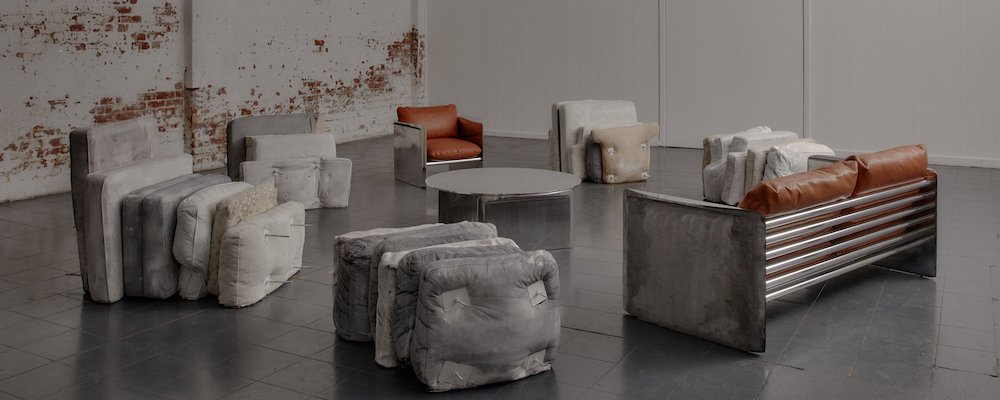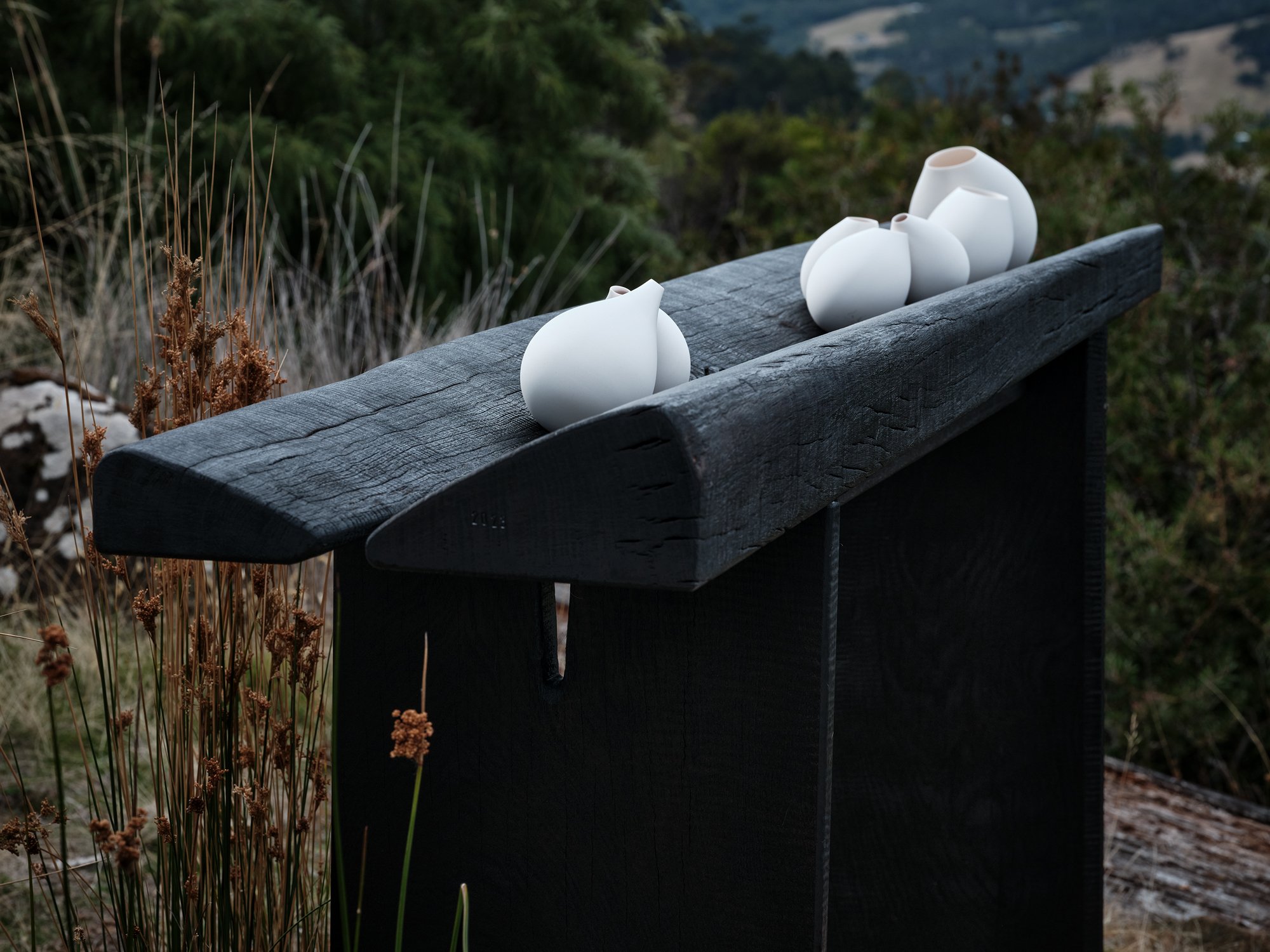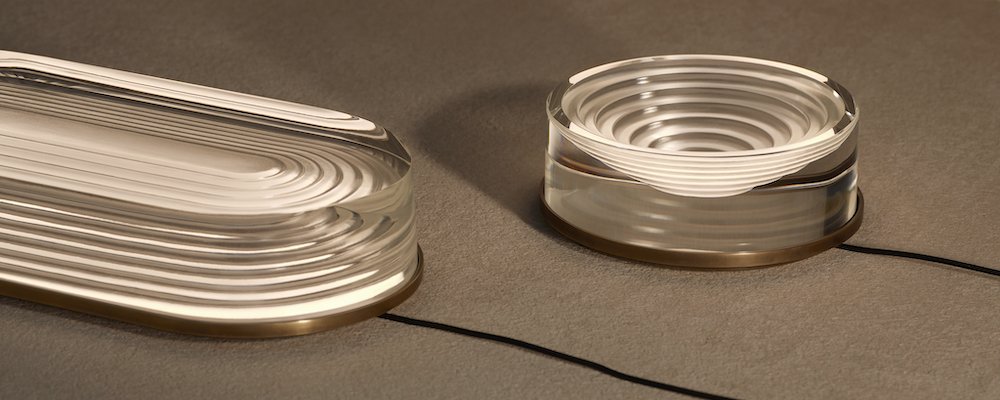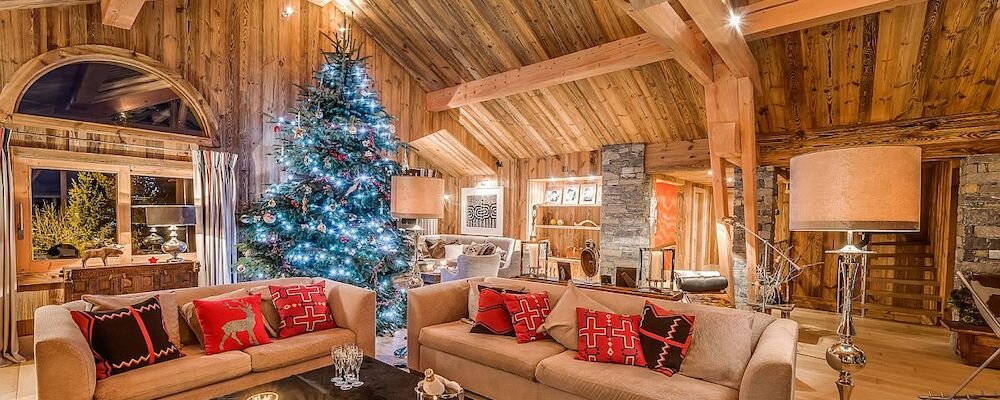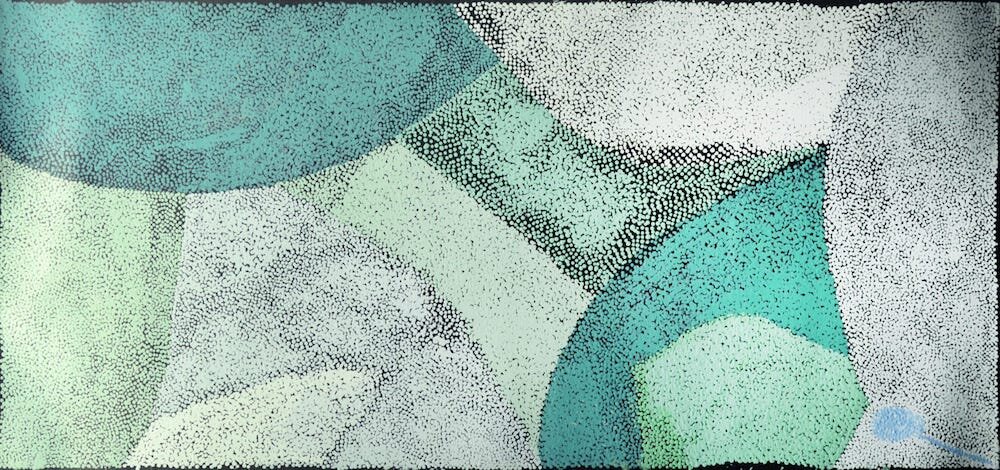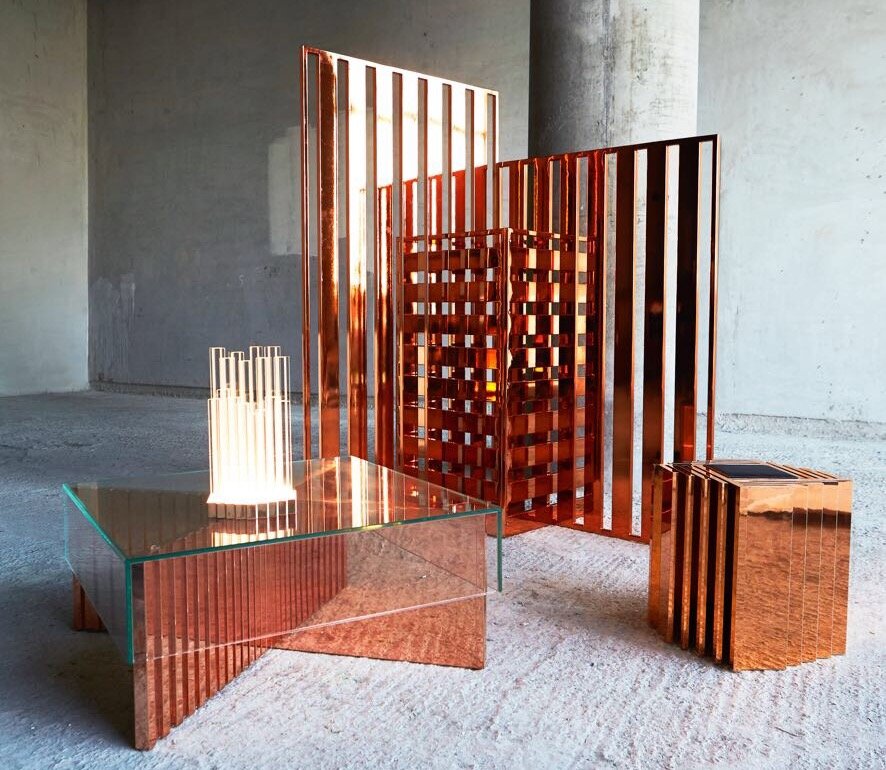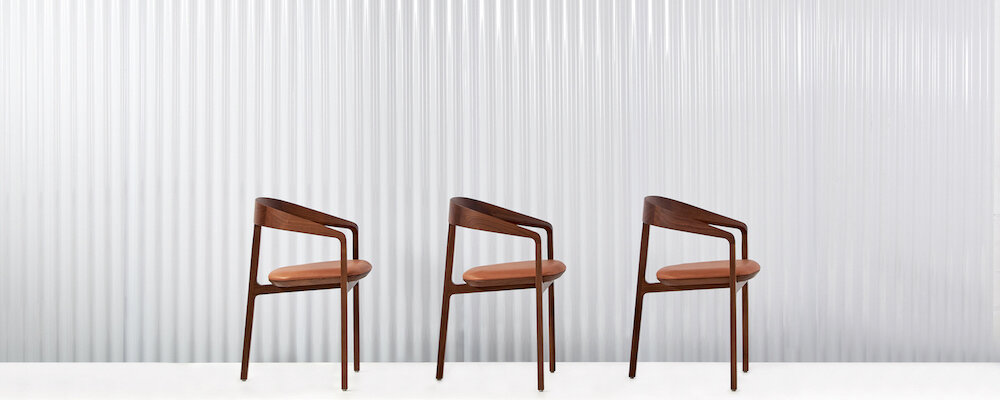The Sana Collection by Tom Fereday
On the occasion of the Hybrid exhibition, the Museum of Applied Arts & Sciences in Sydney, also known as the Powerhouse, has commissioned nine design studios to work with researchers to create furniture exploring the changing global landscape and the pressing issues of our time.
Here is the Sana Collection by Tom Fereday with Dr Thea Brejzek.
The selected designers have responded to issues such as the global pandemic, poor air quality, bush fires, rising temperatures and wellbeing to premiere new objects ranging from a contemporary home shrine, objects to refocus and de-stress, a responsive light source that brings the experiences of nature into the home, a table from recycled plastic to artefacts developed from the objects left behind by the deceased.
The exhibition also showcases the collaborations between: Adam Goodrum x Ella Williams; Elliat Rich x Professor; Joel Pearson and Canberra Glassworks; Henry Wilson x Stanislava Pinchuk; GibsonKarlo x Veena Sahajwalla; Rive Roshan x Emmaline Cox; Andrew Simpson x Professor Tracie Barber; Charles Wilson x Giri Gaurav and Bala Mulloth and Trent Jansen x Johnny Nargoodah.
The SANA (‘to live’ in Korean) series of small household objects — vase, candle holder, platter — was developed according to proxemics, the study of behaviour in relation to personal space.
The elegantly robust forms are typical of Tom Fereday’s work, while the nuanced interplay between the pieces reflects Dr. Thea Brejzek’s research into spatial theory and the impact of interiors on wellbeing. It is the first ever homewares collection developed by designer Tom Fereday and was conducted from a research-based approach into wellbeing within the domestic living space.
Tom Fereday and Dr. Thea Brejzek conducted research into privacy and wellbeing within the home. Focusing on small urban domestic spaces SANA explores a series of unique, democratic objects, defined within the spatial zone of personal, ie 45-120 cm distance from the user, following Edward T. Hall’s seminal definition of proxemics and categorisation of spatial zones into intimate, personal, social and public (see Hall 1966). The objects’ scale, material and function resulted as a consequence of the spatial zone establishing the inspiration for aesthetic and functional objects that could be handheld.
Previous research into privacy and wellbeing (Brejzek/Wallen/Fereday 2020) had uncovered several parameters typically thought to be beneficial for wellbeing, defining benchmark themes for the SANA collection namely; tactility, nature, familiarity (materials), smell, aesthetic pleasure and ambience.
The home is a refuge, a place we can retreat to. It can be a social space or it can be an intimate private space. Each piece in the range was designed to consider this alternating role within the home, to form an eclectic range bound by common material and small footprint.
“The core concept centred on the materiality and weight of cast quartz crystal, which allowed us to create solid objects with a small footprint.
The material imbues the pieces with a sense of gravitas with the aim to create a sense of calm within the home.”
Material research focussed on natural materials which may be subtle yet retain a high perceived value. The resulting chosen material, solid cast quartz glass was selected for its high degree of optical transparency, natural variation in finish, thermal excellence and overall weight and quality.
The range comprises of bold minimal vases weighted to afford large native plants to be displayed within a small footprint, a collection of small candle lit table lamps offering natural ambience and warmth without use of power and a platter designed to allow for small objects or scented oils.
When you take possession of an object you care about how it came about, how it was made, why it was significant and this meaning and purpose directly affects how you value the object and the space around it. Familiarity of material was important to address alongside a feeling of quality in both the form and resulting weight of the cast elements.
Each object was designed to be cherished, to compliment a variety of small spaces and importantly attempt to genuinely improve wellbeing within the home. Objects that you care about often carry memories and we wanted to create a series of objects that could afford this over time.
Curating the home allows for a sense of identity and belonging to a space, it was important that each resulting piece in the collection be intimate and mobile in character to allow them the be moved, clustered and changed to enable various moods and atmospheres in one’s private space.
“Curating the home allows for a sense of identity and belonging to a space; it was important that each resulting piece in the collection be intimate and mobile in character to allow them to be moved, clustered and changed to enable various moods and atmospheres in one’s private space.”
The exhibition runs until February 28th, 2021 at the Powerhouse.
Pictures by Fiona Susanto and Zan Wimberley.















